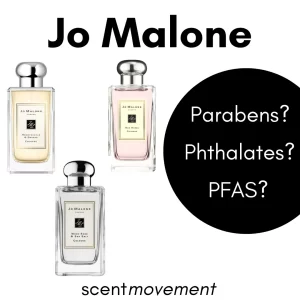
Jo Malone Perfume | Parabens? Phthalates? PFAS?
Do Jo Malone’s perfumes contain parabens? phthalates? PFAS? We take an in-depth look.
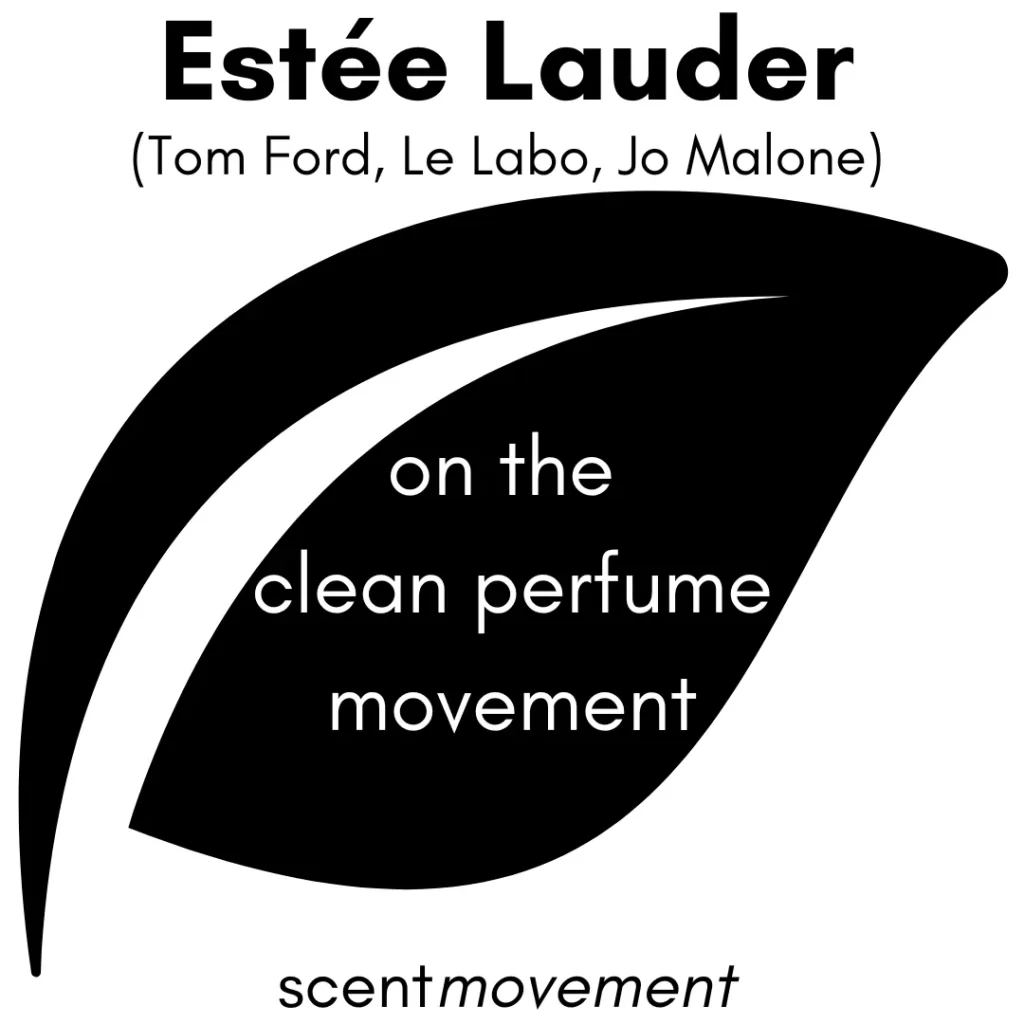
When it comes to all the major players in the perfume world, there are two major categories. Perfume brands that are privately-owned and perfume brands that are publicly-owned.
Publicly-owned companies, also known as public companies, have a greater degree of responsibility to their shareholders and the general public compared to private companies. This is because they have sold shares of ownership in the company to the public, and are therefore subject to regulatory requirements and financial reporting obligations. Public companies have a legal obligation to act in the best interest of their shareholders and provide them with accurate and timely financial information, and may be subject to additional scrutiny from regulators and other stakeholders. Private companies, on the other hand, have more freedom to operate as they see fit, as they are not beholden to shareholders or required to publicly disclose financial information.
So what does this mean? Any perfume brand that is owned by a public company must disclose certain information to the public. This is done in various ways, including an “Annual Report”. There’s a lot of good information to be gleamed from these Annual Reports. They are often hundreds of pages long, but don’t worry, we read them for you and pulled out all of the best information related to perfume and the clean perfume movement, and summarized it below.
Even though there’s a ton of perfume brands, fewer are owned by publicly-traded companies. And these public companies own many perfume brands.
We read through the 297 page Estée Lauder Annual Report for 2022. Here’s the highlights when it comes to perfume:
Estée Launder owns the following perfume brands:
Here’s what Estee Lauder has to say on the clean perfume movement – we underlined specific areas of interest:
Business Update
Competition
Social Impact & Sustainability
Perfume makes up a nice portion of Estée Lauder’s business. Perfume (or “Fragrance”) made up 14% of Net Sales in 2022 (up from 12% from the prior year)
Europe, the Middle East & Africa
Reported net sales in Europe, the Middle East & Africa increased in fiscal 2022, reflecting continued recovery across the region, primarily due to store openings, increased retail traffic, and the easing of travel restrictions compared to the prior year, led by our travel retail business and the United Kingdom of approximately $541 million, combined. Despite the resurgence in COVID-19 cases in many Chinese provinces, which led to restrictions to prevent further spread of the virus and the curtailment of travel during the second half of fiscal 2022, net sales increased in our travel retail business, reflecting continued strength of our brands with the Chinese consumer, the easing of travel restrictions in Europe, the Middle East & Africa and The Americas, and continued success of hero product franchises from La Mer, Jo Malone London, Tom Ford Beauty, Clinique and M·A·C. These benefits were partially offset by lower net sales from Estée Lauder products, primarily reflecting lower net sales from the Advanced Night Repair product franchise primarily due to the prior-period launch of Advanced Night Repair Synchronized Multi-Recovery Complex. Net sales in the United Kingdom increased, primarily reflecting incremental net sales attributable to the increase in our ownership of DECIEM in the fiscal 2021 fourth quarter, brick-and-mortar recovery, as noted above, and benefiting from the growth in makeup and fragrance.
Asia/Pacific
Partially offsetting the fiscal 2022 decrease in Asia/Pacific were increased net sales from mainland China and Australia of approximately $82 million, combined. Net sales increased in mainland China, primarily due to the continued success of hero products franchises from La Mer and Jo Malone London, reflecting continued growth in skin care and strong momentum in fragrance, successful performance during holiday and key shopping moments, new product launches, and the current-year launch on a new third-party online platform. This increase was achieved despite the resurgence in COVID-19 cases in many Chinese provinces during the second half of fiscal 2022, which led to restrictions to prevent further spread of the virus and the curtailment of travel. Net sales in Australia increased, primarily driven by incremental net sales attributable to the increase in our ownership of DECIEM in the fiscal 2021 fourth quarter.
Estée Lauder owns a lot of different perfume brands, most of which we would not consider to be “clean” – they are not transparent about the ingredients used and thus we have to assume that the perfumes contain parabens/phthalates/PFAS/etc.
Le Labo stands out to us, as they are a brand we like and recommend based on their safe ingredients and transparency. Out of the many perfume brands owned by Estée Lauder, they only called out some in their Annual Report – Le Labo being one of them. We are happy to read that Le Labo is selling well.
We are also happy to see “ingredient transparency” listed as an area of focus for Estée Lauder. They seem to be acknowleding that consumer preferences are shifting towards this and claim to be a good position to meet these changing needs.

Do Jo Malone’s perfumes contain parabens? phthalates? PFAS? We take an in-depth look.
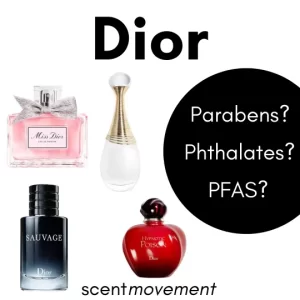
Do Dior perfumes contain parabens? phthalates? PFAS? We take an in-depth look.
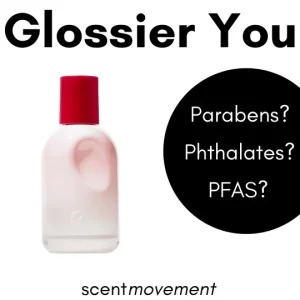
Does Glossier You contain parabens? phthalates? PFAS? We take an in-depth look.
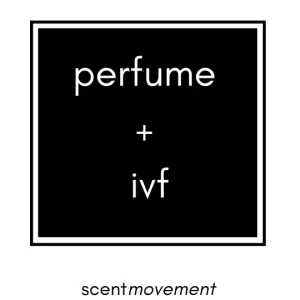
Delve into the surprising world of IVF clinics and uncover the reasons behind their ban on perfumes. Understand how scent can influence fertility treatments and learn what precautions are necessary for a successful IVF process.
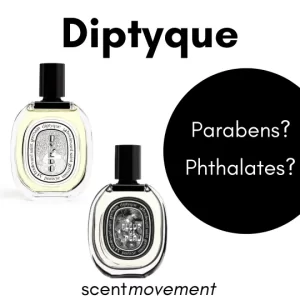
Do Diptyque perfumes contain parabens? Pthalates? Your questions answered here.
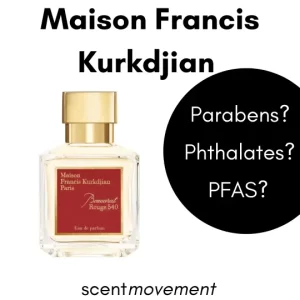
Do Maison Francis Kurkdjian perfumes contain parabens? phthalates? PFAS? We take an in-depth look.
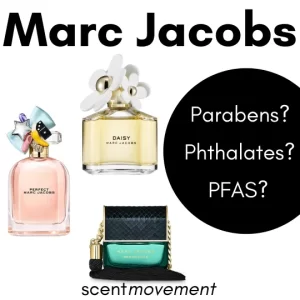
Do Marc Jacobs perfumes contain parabens? phthalates? PFAS? We take an in-depth look.
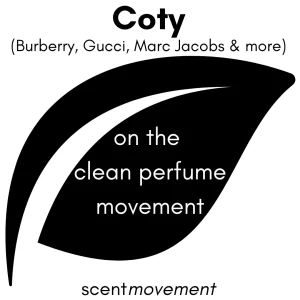
We look at COTY’s most recent reports to see what, if anything, they say on the clean perfume movement.